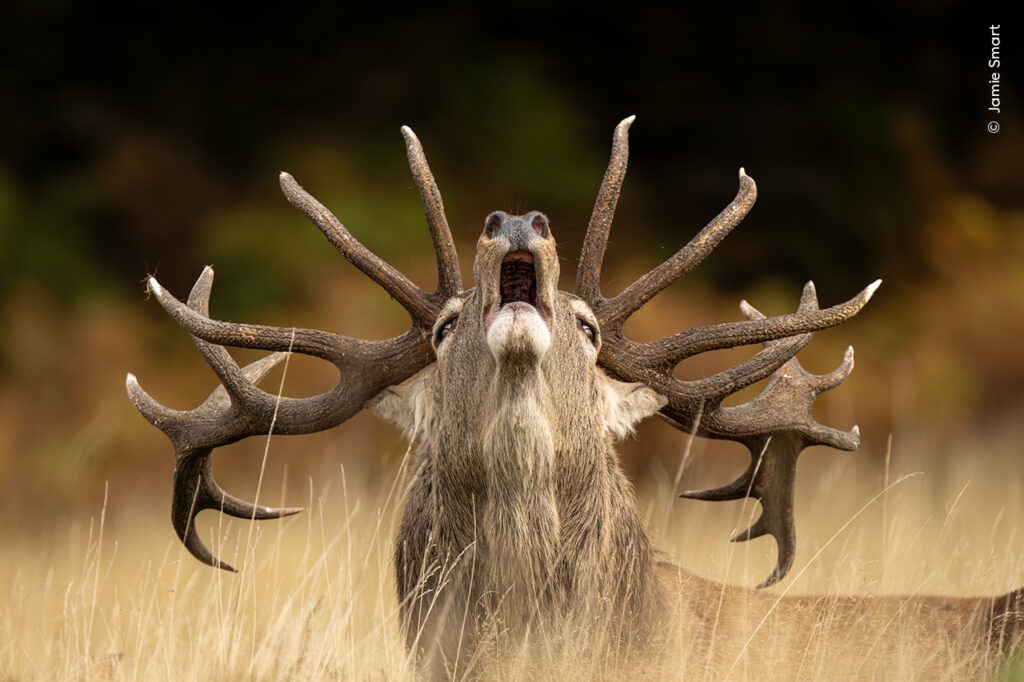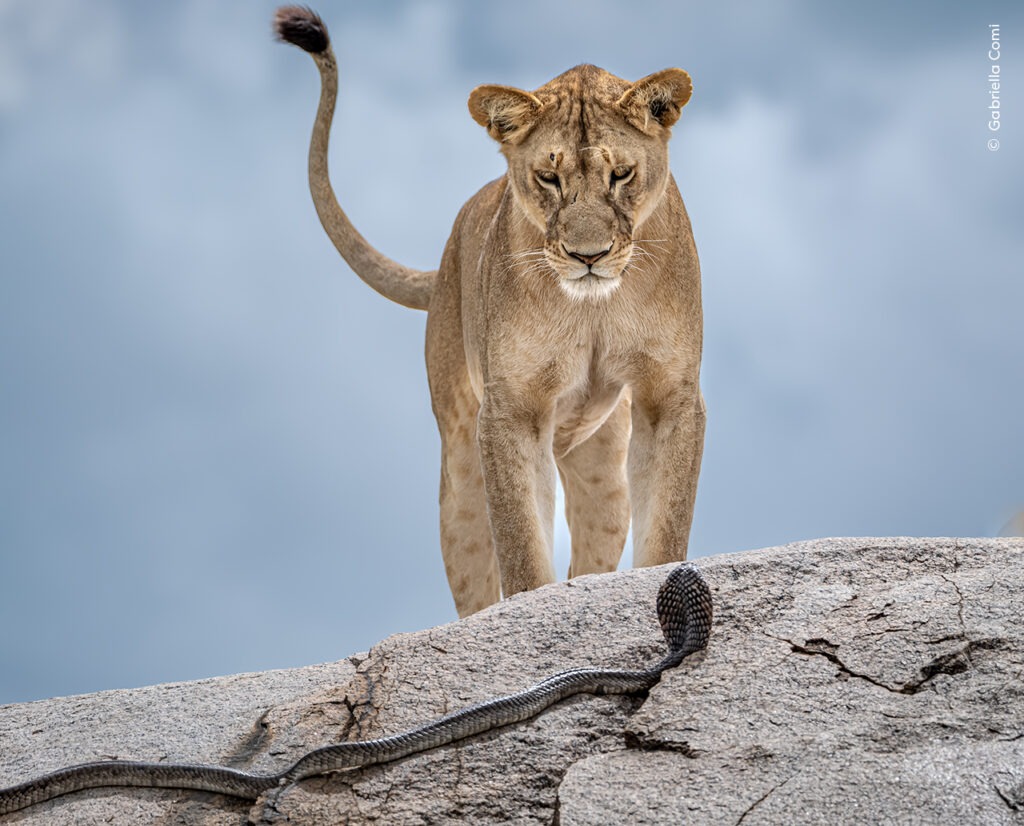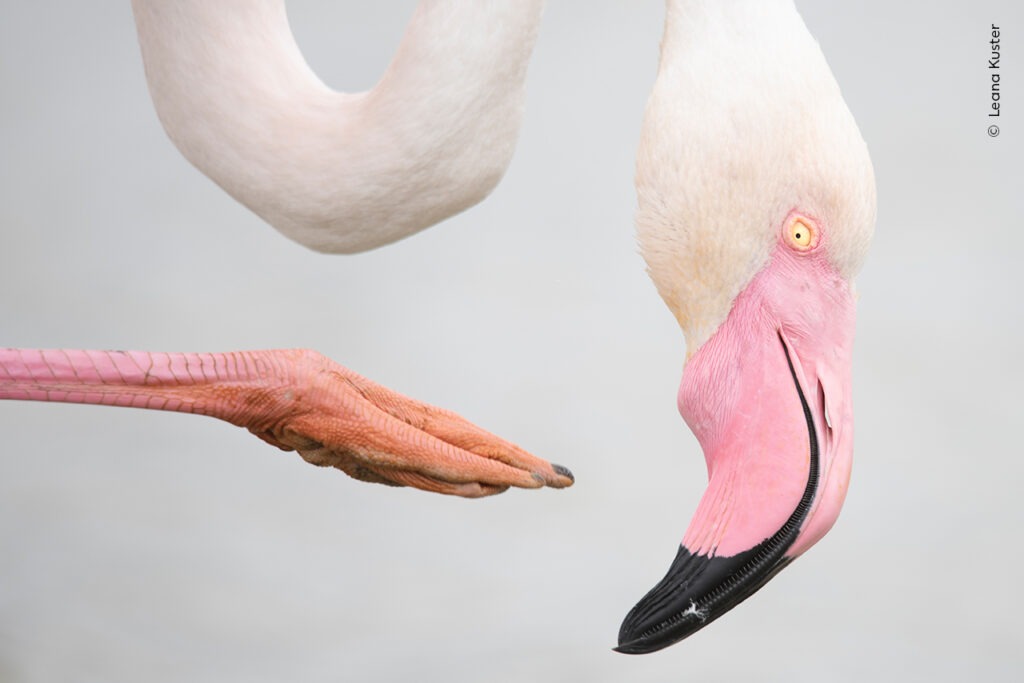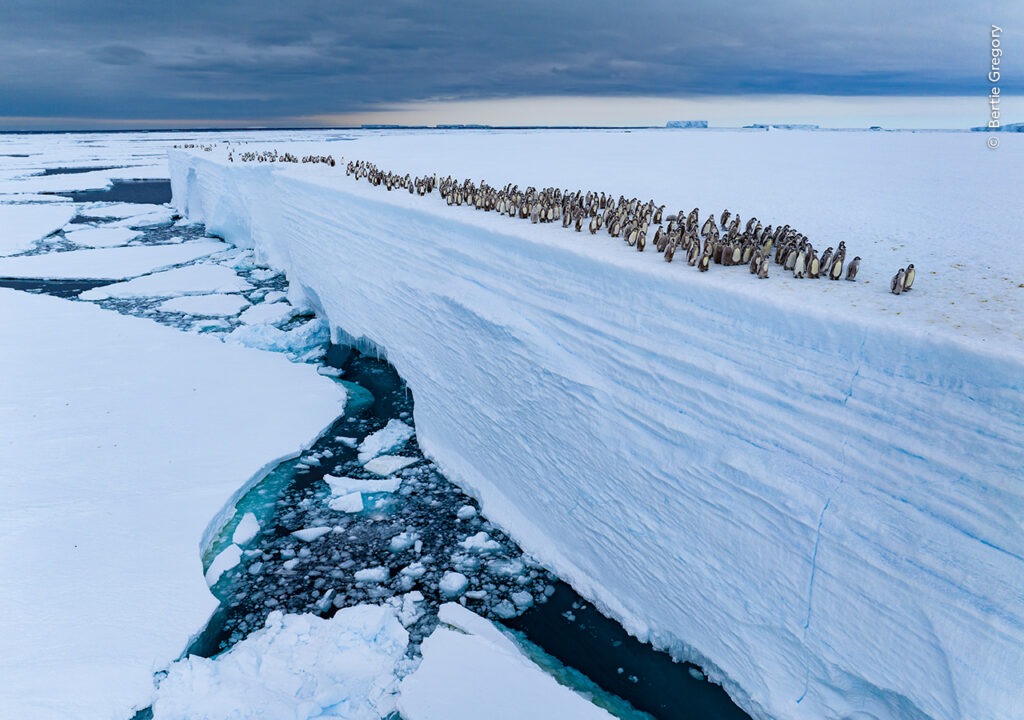Selected from more than 60,000 entries across 113 countries and territories by an international jury of experts, the images will be among a total of 100 photographs in an exhibition at the Natural History Museum in London from 17 October.
The 19 category winners and this year’s Wildlife Photographer of the Year will be revealed on 14 October at an awards ceremony at the museum, hosted by Chris Packham and Megan McCubbin.
A competition showcase will appear in the December issue of Outdoor Photography (OP 324).

Photographer: Jamie Smart
Location: Bradgate Park, Leicestershire, UK
Jamie Smart portrays a red deer stag as it gives a mighty bellow during the autumn rut in Bradgate Park.
Jamie walked up and down a path in the park at a safe distance from the stag. She stretched herself up tall to avoid any long grass in the foreground spoiling her view.
The stag’s antlers have regrown since their annual shedding in spring. The ‘velvet’ – the soft skin that covered them during their growth – has now rubbed off, exposing the bone beneath. Each new set grows larger and more complex as the stag matures, with more intricate points called tines crowning the heads of older males.

Photographer: Gabriella Comi
Location: Serengeti National Park, Tanzania
Gabriella Comi witnesses a dramatic stand-off between a lion and a cobra.
Energy levels among the lions were low in the scorching midday sun. Gabriella and her guide, David, were about to move on when David spotted movement – a cobra was slithering towards two sleeping lions. Within seconds, the eldest of the pair was facing down the venomous intruder.
Tanzania’s Serengeti National Park is renowned for its large population of lions, with around 3,000 individuals living there. Lions are estimated to sleep for up to 20 hours a day to conserve energy.

Photographer: Isaac Szabo
Location: Columbia County, Florida, USA
Isaac Szabo watches longnose gars spawn in a crystal-clear Florida river.
Wrapping his feet around a drowned tree, Isaac photographed this female longnose gar with several males during the mating season. The presence of the turtle was, for Isaac, the ‘icing on the cake’, as it ‘gives a sense of the whole ecosystem’.
This river is one of more than 1,000 waterways fed by freshwater springs renowned for their clarity. Maintaining the aquifers that supply these springs is vital not only for iconic wildlife such as manatees, but also for providing drinking water to nearly half of Florida.

Photographer: Leana Kuster
Location: Pont de Gau, Camargue, France
Leana Kuster shows a greater flamingo in the act of scratching its head with one of its unmistakably long legs.
While on holiday in southern France, Leana had been watching flamingos in the Camargue. She was fascinated by their foraging behaviour as they moved gracefully through the shallow, saline wetlands, filter feeding for molluscs and crustaceans.
Flamingos use their tongues to force water through their specially adapted bills, which are lined with many rows of fine, comb-like plates. These help trap a species of brine shrimp called Artemia salina that gives the birds their famous pink hue.

Photographer: Bertie Gregory
Location: Ekström Ice Shelf, Atka Bay, Antarctica
Bertie Gregory freeze-frames the moment fledgling emperor penguin chicks walk along the edge of an ice shelf.
Bertie spent two months with the penguin colony and witnessed most chicks using ice ramps to descend to sea level for food. But this group missed the easy way down. Keeping his drone at a safe distance, he watched as they took a 15m leap into the water.
Left to fend for themselves, emperor penguin chicks must find a way to make their first dip into the icy ocean to find food. Scientists believe the continued decline of sea ice in Antarctica may force more penguins to breed on ice shelves, making this behaviour increasingly common in the future.

